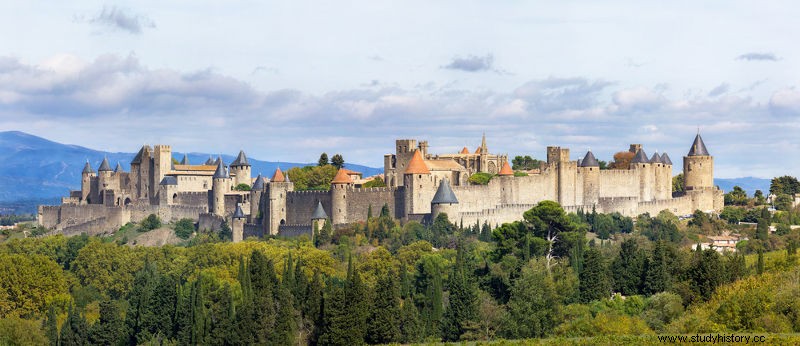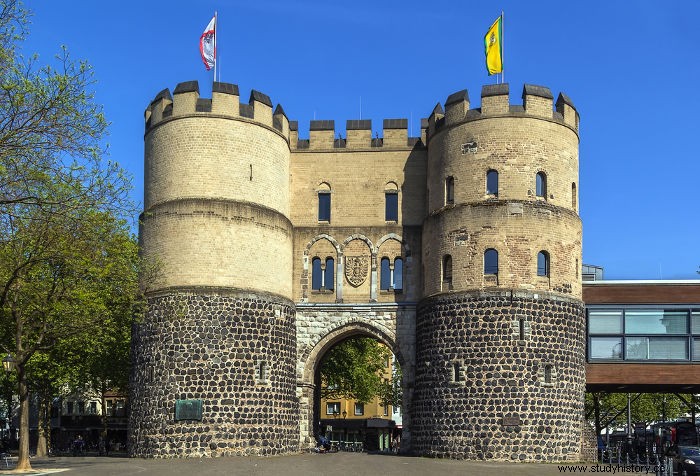
The Middle Ages is a period of history that chronologically was started at 476, with the breakup of the Western Roman Empire, and ended in 1453, with the fall da city from Constantinople . This period was very characterized by the existence of feudalism in certain places in Europe, in addition to a strong influence of the Catholic Church on people's daily lives.
Emptying of cities
Because it is a very long period of human history, the concept of a medieval city changes according to the period covered. With the breakup of the Roman Empire and the consequent beginning of the Middle Ages, the cities of Western Europe went through a period of emptying, in which there was a migration of the population from urban centers to the zone rural .
The emptying of cities resulted from the breakup of the Roman Empire, as the producing areas of the empire were attacked by the peoples Germans in migration. This caused a decrease in production, affecting the supply of cities and generating hunger. In addition, large cities became targets for these Germanic peoples interested in the loot .
Thus, the urban population migrated to the countryside to be close to the food and supply producing areas and to escape the looting and violence brought by the Germanic peoples. This transition initiated the process of formation of the fiefs medieval . A strong feature of this period was the almost non-existence of trade and currency circulation. What little trade did exist, generally, took place between neighboring fiefs and was carried out on the basis of barter (exchange).
Urban Renaissance

One of the gates of the medieval city of Hamburg, Germany
The urban renaissance occurred as a result of innovations techniques implanted in agriculture from the 11th century. Among these innovations, we can mention the rotation dos grounds cultivated and clearing (soil preparation), which made it possible to expand the cultivated fields. As a result, there was an increase in agricultural production and an increase in population.
The increase in production created an agricultural surplus that encouraged increased trade. Cities reemerged from a migratory flow of people who sought to leave the servitude of the manor to seek new jobs in the city. However, the medieval world still remained essentially agrarian . The historian Franco Hilário Júnior states that, during the 13th century, about 20% of the medieval population lived in the cities |1| .
The rebirth of the medieval city also resulted in a transition from power . The bishops and a part of the nobility who wielded power were gradually replaced by the rising class of bourgeois, that arose from the growth of commerce and its establishment in the cities (burgos).
In the 13th century, large cities were already established in various parts of western Europe. On the size of medieval cities during the 13th century, French historian Jacques Le Goff states that:
An important city in the West had between 10,000 and 20,000 inhabitants. Palermo and Barcelona stood out from the crowd, with around 50,000 inhabitants. London, Ghent and Genoa and, in Muslim territory, Cordoba, with around 60,000 inhabitants. Bologna undoubtedly had between 60,000 and 70,000 inhabitants, Milan 75,000. Only Florence and Venice reached and perhaps exceeded 100,000 inhabitants; and indisputably the largest city Paris, as it was shown to have undoubtedly contained 200,000 inhabitants around the year 1300 |2| .
Urban renaissance and population growth, however, suffered a strong impact with the so-called crisis of the 14th century, where the advance of the plague bubonic , called the black plague, decimated a considerable part of the population in a fulminant way. The spread of the disease occurred through fleas present on rats and killed at least a third of the population in western Europe. In England, for example, mortality reached 70% of the population |3| .
|1| FRANCO JUNIOR, Hilary. The Middle Ages, birth of the West. São Paulo:Brasiliense, 2006, p.23.
|2| LE GOFF, Jacques. The medieval roots of Europe. Petrópolis:Vozes, 2011, p.147.
|3| Idem , p.228.
by Daniel Neves
Graduate in History
